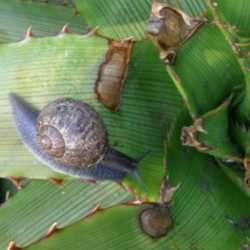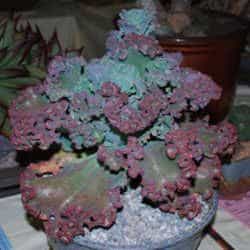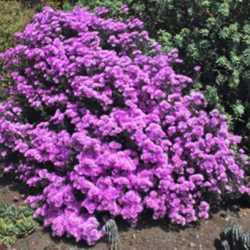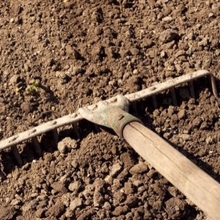As an exotic plant enthusiast I am constantly rediscovering out how difficult it is to find out about a lot of the plants I collect and grow. It is very frustrating, yet there is almost always someone out there who knows the answers, or at least can help point you in the right direction (if there is one). Over the years I have been collecting a modest library and list of web sites and forums that I have found useful in my search for information. For those growing roses, lilies etc. there is already a massive wealth of information (almost too much) you ‘ordinary’ plant lovers can tap into to help in finding your answers. But for the oddball that likes oddball plants, like I do, then this article is for you.
If you are reading this article now, you have made an excellent start in your search for exotic plant information. Davesgarden is probably one of the very best sites for photographic information, as well as basic plant data, for many exotic and rare plants. Follow this link to PlantFiles and begin looking…. It can be addictive as well as instructional. There is not another website that is so all-inclusive or has so many entries for so many exotic and rare plants as Davesgarden. You may not find every plant you are looking for here, but chances are best this is the single site most likely to have your plant. The site is constantly being updated and corrected (sadly there are downsides to allowing anyone to input information - you an attract some misinformation that way, too, so the site is not perfect). But so far, there are really are no comparable garden web sites.
As good a website and a place to start as Davesgarden is, it is not however, the be-all and end-all, no matter how much people like me try to make it that way. There are dozens and dozens of other web sites that seem to attract a different crowd of specialists so if you look hard enough you can eventually find someone who knows more than you do. Nor is all the information one seeks available online. As archaic as they may sound to the younger crowd, written texts and encyclopedias are still among the best sources of specific plant information- possibly pictorial still, as well as written.
The purpose of this article is help the reader sift through the gazillions of sources of plant information and find the ones I personally have discovered to be the most useful and worthwhile to read, visit, buy etc. It is not, however, an article designed to help one to find plants to buy… it is geared towards the pursuit of information only. There are hundreds of good on line sources for plants if one looks carefully, and hundreds of decent nurseries around the country as well. For more information about where to buy plants, I encourage you to vist PlantScout here at Dave's Garden.


Cacti: As in most areas of plant taxonomy, Cactaceae is in a constant state of flux. Genus and species names are changing all the time, plants are being moved from here to there, and back again, and new genera and species are being created, then absorbed back into others. And then there are the cultivars, hybrids and varieties… it is too much almost for any human to get a good handle on. To most of us (myself included), many cacti look a LOT alike, so for proper identification one really needs to consult experts. I am certainly no expert in this area despite my growing many hundreds of species and photographing literally thousands. To me, cacti are probably the most difficult family of plants to identify correctly and keep up to date on.
Books on Cacti: There are hundreds and hundreds of books on cacti, but most are little more than picture books (though this is not useless information by any means) or far too cursory to be good informational sources. Most of the ‘picture books’ also tend to have a lot of incorrect names and misidentified plants. There really are only a few books one needs in their library if they want the have the best overall sources for cactus information that is reliable.
The Cactus Family by E. F. Anderson 2001
The New Cactus Lexicon by David Hunt 2006
Cactus Journals: there are several journals about cacti printed in various languages, but the only one I currently know much about is the Cactus and Succulent Journal put out by the American Cactus and Succulent Society. It has excellent photos and well-researched articles, as well as news about local societies in your area.
One Line Cactus Information: cactiguide.com/
This is probably one of the best organized informational sites and well policed in terms of accuracy that I have found on line. It still has a lot of missing information but it is also one that encourages input from the educated public all the time, particularly in terms of photography.
This site has dozens of excellent links to professional organizations and clubs that have to do with cacti, as well as being a good place to start if one is looking to buy plants. It is almost overwhelming in its lists of links and helpful information. But if you are looking for links to sites for information in languages other than English, this is probably the best place to start (there are Chinese, Dutch, German, Polish, French, Thai etc. web sites listed here, all devoted to cacti and succulents). This site lists cactus and succulent related events around the world, too.
This is easily the most exhaustive collection of online cactus information there is with nearly 7000 cactus entries, and thanks to a few members who’s expertise is nearly unparalleled, there are few errors in this section of the plant files of Davesgarden. Almost all species of cacti are listed here, though not all with current photographs. Still, no site compares to this one, so far.
http://www.desert-tropicals.com/index.html
This site was once my one line bible for plant information and proper spelling. It is still an excellent site, but for actual information about cacti, other than where they are from or synonym lists, it is not all that useful. Many plants have a single photograph, but many do not. It can be a good place to start, though.
Forums about Cacti:
Cactiguide.com/forum/ This is a somewhat slow forum, but a good one with reliable member comments
thegardenforums.org This one is probably one of the most active and excellent for asking questions about cacti, sharing photos, seeing plants in native habitat and keeping up to date, being frequented by members who really know their plants. It is a bit surprising, as the rest of the forums on this site seem much less active and less frequented by experts in the field. Not true with this one, though.
Succulents forum on davesgarden.comThe cactus and succulent forum in Davesgarden.com is a pretty active site (one of the most active forums on the entire site) but it is not necessarily frequented by the world’s experts (someday that may change?), but more the avid enthusiasts.
Cactus Societies: there are hundreds of cactus and succulents societies around the world, with nearly every country and language having one. Since I only speak English, I will for now not bother listing the other societies as I really have no way to evaluate how active and large they are. For more society information, on should visit the cactus-mall.com site.
The Cactus and Succulent Society of America
This society seems to be one of the most active around the world and has hundreds of sub-societies in most states throughout the US where one can go to meetings and see, show and learn about cacti. The journal is top notch as well.
The British Cactus and Succulent Society
This society even has a forum, but it is relatively quiet and not nearly as good as the above forums tend to be. They put out a journal and have a pretty good web site as well.


Agaves (and their relatives): Agaves are another group of plants that are not my specialty, and possibly for that reason, I have a very hard time telling many of them apart. Additionally, many species of Agave look very different depending on how they are grown and what specific variety they are (so different, that it is hard to believe they are the same species). I find them almost as baffling as I do the cacti.
Books on Agaves: So far, there are no good ‘all inclusive’ books on Agaves and their relatives (Yuccas, Furcraeas, etc.). I have a few of the books that consider themselves to be ‘guides’ but fall short primarily by leaving out so many species. The other one, a relatively decent overview of Agaves, is woefully out of date and does not include any of the species found on the islands in the Caribbean, nor does it of course, include anything recently discovered (which there are surprisingly a large number of recently discovered species- most very nice, too). I would not have a problem with the other two if they left out incredibly rare plants that simply did not exist in cultivation, but they tend to omit many of the common ones (sometimes the most common ones of all). I don’t really get it. To date (2012) there are only three decent books on Agaves:
Agaves of Continental North America by H.S. Gentry 1982
Agaves by Greg Starr 2012
Agaves and Related Plants by Mary and Gary Irish 2000
Journals about Agaves: to date, there are no good journals focusing on this group of plants or their relatives, though occasionally there may be a good article on some in the Cactus and Succulent Journal put out by the Cactus and Succulent Society of America.
On Line Agave Information:
http://www.agavaceae.com/botanik/pflanzen/
This is an amazing compilation of the genus Agave with photographs in habitat of almost half the existing list of Agave species. It is not a great source of other information, however, but a good place to start.
The Agave Pages website has several nice links with lots of photographs of agaves in cultivation along with a nice article on Agaves.
http://www.desert-tropicals.com/
This site will probably pop up again and again throughout this article as it was once my go-to site for Agave information. It does tend to provide information from an Arizona point of view, so plants they list that may need shade or protection do not necessarily anywhere else in the country. I do not think anyone has been working on it recently, and it may be a bit out of date. Still, it can be an excellent place to start looking.
This is the page for all plants in the Agavaceae, which includes all Agaves as well as Yuccas, Furcraeas and the other agave relatives. It is probably the best overall list there is, and has more information than do any of the other web sites, though again a lot of the ‘information’ is anecdotal and supplied by back yard enthusiasts, not necessarily experts in the field.
Agave Forums: There is only one good forum I have found on this group of plants, but it tends to attract many of the worlds experts on these plants and is by far the best place to run unknowns by and discuss the most recent information on Agaves.
http://www.xericworld.com/forums/forumdisplay.php?f=7
Xericworld.com is a great and very active site devoted to many exotic plant species. It is one of the best places to visit for many other plants than agaves alone, but the membership seems particular weighted towards this particular group of plants for some reason.


Nolinoideae (aka Ruscaceae: Beaucarnea, Dasylirion, Dracaena and Sansevieria etc.): This is a group of exotic plants that is sometimes lumped in with the Agave family, but every now and then gets moved to a separate location. Since at the time this article was written, most sources did not include it with the Agave, I list it separately now. There is not a lot of information on these genera in any concise locations, unfortunately, with the exception of the Sansevieria.
Books about Nolinideae: The Splendid Sansevieria by Juan Chaninian 2005
Agaves, Yuccas and Related Plants by M and G Irish 2000
Journals about Nolinideae: http://www.sansevieria-international.org/journal.htm
This society puts out a journal about 3x a year but I cannot tell if it is still active
On Line Nolinideae Information: Nolina information on PlantFiles
The Davesgarden plantfiles still lists these plants under Ruscaceae and this search includes several genera I am less than interested and do not necessarily consider exotic (such as Aspidistra, Liriope and Mondo Grasses etc.). However, aside from these diversions, this collection of information and photographs appears to be easily the most complete and extensive on the internet.
Forums about Nolinideae: GardenWeb forum for Sansevieria
Gardenweb.com has many forums, though the expertise level on most is not that impressive. However, when it comes to Sansevieria, this is easily the best there is
Societies concerned with Nolinideae: http://www.sansevieria-international.org/journal.htm
Though there is a Sansevieria society it is difficult for me to tell how active it is.


Aloes: This is one of my favorite group of plants so I am particularly active in looking up information and utilizing most of the available resources on this family of succulents.
Aloe Books: Until recently there has been only a few decent books on Aloes, but they were either way out of date, or focused on South African species only. Fortunately that is no longer the case. Probably having the three following texts will cover just about all one needs on Aloes in print. However, the world of Aloe research is a very active one, and there are dozens of new species that not even the latest book cover.
Aloes: The Definite Guide by Carter, Lavranos and Newton 2011
Aloes of Madagascar by Castillion 2010
Guide to the Aloes of South Africa by Van Wyk and Smith 1996
Aloe Journals: there was an Aloe Journal put out by the Succulent Society of South Africa, but I have not heard anything about it in years, so I could not comment on this source.
On Line Aloe Information:
Despite the apparent popularity of this group of plants, there are very few good online sources of information about this genus. The Davesgarden plantfiles is easily the most comprehensive, and includes a large number of cultivars and hybrids as well. Still, the books on the subject are still superior to this source in terms of accuracy and scientific information.
This web site is still full of ‘holes’ in terms of photographic representation and cultivational information as well, but it is a good place to find photos of many rare species of aloe in their natural habitat.
Aloe Forums: there are few forums about aloes, but the xericworld site has probably the best and most active aloe discussion group I can find.
http://www.xericworld.com/forums/forumdisplay.php?f=11
http://tech.groups.yahoo.com/group/Aloe/
This is not a terribly active forum, but it does have spurts of interesting activity and often nice photographs of plants in habitat.


Aloaceae (the genera that do NOT include the Aloes, such as Haworthia, Gasteria etc.): There is not a great deal of information about most other Aloaceae either in the published literature or on line, except for the genus Haworthia. This genus, for reasons that only become clear once you get bitten by the ‘Haworthia bug’, is a huge deal when it comes to collecting and growing rare species and particularly ornamental cultivars and hybrids. I personally find most of these species hard to distinguish, and floral characteristics are no help here. This is a genus where expertise is often needed if one wants to learn what is what.
Books about Aloaceae species: Haworthia for the Collector, but Rudolf Schulz 2009
Gasterias of South Africa by Jaarsveld 1994
On Line Aloaceae Information:
http://haworthia-gasteria.blogspot.com/2008/01/home.html
this site is someone’s blog, but it is highly organized and contains hundreds of excellent photos in habitat as well as cultivation.
http://www.desert-tropicals.com/Plants/Asphodelaceae/Haworthia.html
The Desert-Tropicals web site does have an extensive list of most all the species and varieties, along with locational information. It is also a good source for synonyms.
Haworthia section of PlantFiles
Haworthia search page in Davesgarden’s plantfiles has a lot of the species, but is missing quite a few photos. As nd there are some photos of doubtful accuracy as well.
The Gasteria section of PlantFiles is probably the best internet collection of information and photos of this genus of plants.
Forums about Aloaceae species other than Aloes: I have not found much that constitutes any decent active forums on these plants
Aloaceae related Societies: http://www.haworthia.org/
This is not a terribly active society as far as I can tell, but they have a nice web site and meet yearly- based out of the United Kingdom. The society is devoted to the study and conversation of not just Haworthia, but Gasteria, Aloes and Bulbines as well.


Crassulaceae (Aeoniums, Crassula, Cotyledon, Dudleya, Echeveria, Graptopetalum, Kalanchoe, Pachyphytum, Sedum, Sempervivum, Tylecodon etc.): This is a large group of plants which include over 1400 species and countless cultivars and hybrids. There are few single sources that encompass all of these genera and fewer that concentrate on any one of them. But a few groups of plants have been popular enough to encourage the writing of some excellent books about them.
Books on Crassulaceae: The ‘bible’ of the Crassulaceae is Illustrated Handbook of Succulent Plants: Crassulaceae (one of a serious of comprehensive treatises), edited by Urs Eggli 2005
This is a pricey book which I have not yet acquired, but have had some opportunities to look over and it is indeed an excellent source of information and taxonomy of the Crassulaceae. Though illustrated, it is woefully deficient in photographs of most species of plants (which has to be the case as printing a book with over 1500 color photos that will not be mass produced would be simply unaffordable). The lack of photographs is, frankly, the main reason I have not bit the bullet and purchased this volume, yet.
Aeonium in Habitat and Cultivation by Rudolf Schulz 2007
Crassula: A Grower’s Guide by Gordon Rowley 2003
The Echeveria by John Pilbeam 2008
Echeveria Cultivars by Schulz and Kapitany 2005
An Introduction to Sempervivum and Jovibarba Species and Cultivars by Howard Wills 2004 (I don’t own this book as it costs a fortune)
Handbook of Cultivated Sedums by Ronald Evans 1983
Journals about Crassulaceae: as far as I know, there are not any popular journals that specifically cover Crassulaceae
On Line Crassulaceae Information:
Crassulaceae section of PlantFiles
The Davesgarden Plantfiles is probably the most thorough collection of photographic and cultivational information on this group of plants there is on the internet right now, with over 1600 entries, with the majority including multiple photographs.
http://www.desert-tropicals.com/index.html
The Desert-Tropicals site is still an excellent on line resource for information about most Crassulaceae, including where they are found in nature, synonyms and proper spelling
Forums concerning Crassulaceae species: http://www.xericworld.com/forums/forumdisplay.php?f=12
for some reason, few of these genera attract a huge amount of conversational attention with the exception of Dudleyas. Still, most of the other genera are discussed now and then as well.
http://forums.gardenweb.com/forums/cacti/
This gardenweb forum is one of the more active and the Crassulaceae is one of the more popular topics discussed, particularly Crassula ovatas (Jade Plants), presumably as many of the forum participants to not live in a climate where they can grow outdoor plants much
Societies concerned about Crassulaceae: http://www.cactus-mall.com/sedum/
Other than the Sedum Society, I have not found any groups that concentrate specifically on this family of plants, or any of the genera within.


Succulent Euphorbias: this is another of my favorite group of plants but it is a huge one. I think that is one of the reasons there are few all-inclusive sources of information about this fascinating and sometimes bizarre group of plants. There definitely needs to be more written or compiled about this genus.
Books on Succulent Euphorbias: The Euphorbia Journal 1-10 Edited by Ron LaFon 1983-1997
Sadly this excellent bound collection of journals is not only very costly, but it is no longer in print and has been discontinued as well. Still, it is about the only good written source of information, despite being a somewhat random collection of articles and photographs.
Journals about Succulent Euphorbias: Euphorbia World is a journal produced by the International Euphorbia Society and there are three well illustrated issues a year.
On Line Succulent Euphorbia Information: http://www.euphorbia.de/
This web site based out of Germany is basically a well organized blog, but it does have a lot of excellent photos of cultivated plants (indoors, however). It is far from exhaustive in terms of being a complete compilation of Euphorbias, but it is one of the better on line informational sources.
Euphorbia section of PlantFiles
This search for the genus Euphorbia results in over 900 plants, well over half with multiple photographs. However it still falls short ofcomplete coverage of succulent Euphorbias. There is nothing else more "complete" on the internet, though. This search includes genera that were once listed separately (Monadenium, Synadenium etc.), but does not include some of the succulent species in the family Euphorbiaceae, such as the Jatropha. For information on those species, you will have to do a separate search, but genus. This search also includes a number of non-succulent species, plants I have a harder time describing as "exotic."
Euphorbia Forums: though I have run across a few forums on Euphorbias, I can find none that are what I would describe as active
Euphorbia Societies: http://www.euphorbia-international.org/
There is little information about this society on the internet, but they still seem to be active and they do produce a pretty nice journal


Caudiciforms (aka Fat Plants): This is not a taxonomic group of plants so it is a bit more difficult to find concise, well organized sources of information about these diverse plants, since they cover so many dozens of families of completely unrelated species, from tiny ones that will never outgrow a miniscule pot, to some of the most enormous trees on the planet. But still, there are books, forums and plenty of internet sources of information about these interesting and highly collectible plant forms.
Books about Caudiciforms: Pachyforms: a Guide to Growing Caudiciform and Pachycaul Plants by Vosjoli 2004
Journals about Caudiciforms: there are no journals I know that concentrate on this group of plants, but one can occasionally find good articles about some of them in the Cactus and Succulent Journal by the American Cactus and Succulent Society
On Line Caudiciform Information: http://www.bihrmann.com/caudiciforms/
Probably the most complete single site devoted to caudiciform plants is Bihrman’s web page. He has an impressive collection of photos of these plants in cultivation and in their native habitat in many cases. In this site he also includes succulent bulbs as caudiciforms.
&nb

















